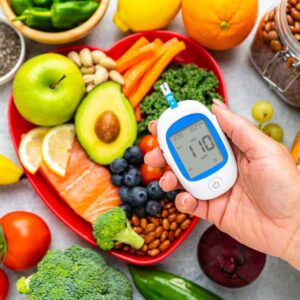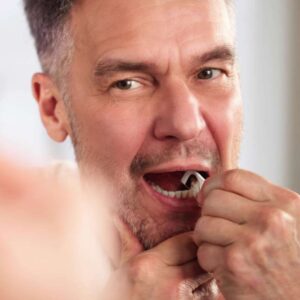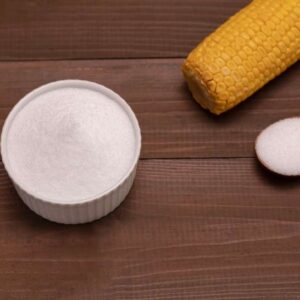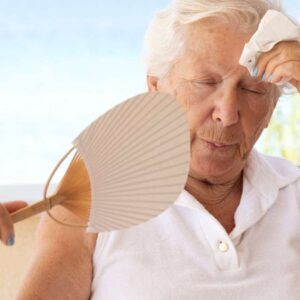
The Stroke-Boosting Threat Lurking in YOUR Arteries
We want to take a moment on this Memorial Day to honor the brave men and women who made the ultimate sacrifice in service to our nation. Their courage, dedication, and selfless commitment to protecting our freedoms will never be forgotten, and their legacy lives on in the country they helped preserve.
I’ve warned you about heart disease and stroke risk factors before.
You know, the usual suspects—like high blood pressure, elevated cholesterol, and smoking.
But there’s a disturbing new threat on the scene that no one talks about nearly enough.
And it’s probably circulating in your bloodstream right now.
Microplastics and nanoplastics are tiny plastic particles that have become widespread environmental pollutants.
Microplastics are plastic fragments less than 5mm, while nanoplastics are smaller, measuring less than 1 micrometer (0.001mm).
These particles originate from the breakdown of larger plastic items through weathering, UV radiation, mechanical forces, and products that intentionally contain them, like certain cosmetics.
Their small size allows them to enter food chains, water supplies, and even human bodies—raising concerns about ecological and health impacts.
Now, research reveals that these microscopic bits of plastic can accumulate in the fatty plaque that builds up in arteries. And their presence dramatically increases your heart attack and stroke risk.
When researchers compared healthy, plaque-free arteries to those with plaque buildup, they found that those with plaque had 16 times more microplastics.
But it gets worse.
In people who experienced a stroke, mini-stroke, or vision loss, the arterial plaque contained an alarming 51 times more plastic.
Microplastics are likely flowing through your blood right now and accumulating in your lungs, liver, and other organs. And now we know they’re also settling into the dangerous arterial plaque that can block blood flow to your brain.
So, where are these plastics coming from? Virtually everywhere:
- Plastic water bottles and food containers
- Synthetic clothing fibers
- Microbeads in personal care products
- Breakdown of larger plastic items in the environment
- Plastic dust from car tires
- Food packaging and plastic wrap
- Plastic teabags and coffee pods
Completely avoiding plastic exposure in modern life is impossible. However, there are steps you can take to reduce your exposure and lower your health risks:
- Drink from glass or stainless-steel containers instead of plastic bottles
- Store food in glass, ceramic, or stainless-steel containers
- Filter your drinking water with a high-quality filter designed to remove microplastics
- Choose natural fiber clothing when possible
- Avoid heating food in plastic containers
- Minimize the use of single-use plastics
- Vacuum regularly with a HEPA filter to reduce plastic dust in your home
- Choose fresh, unpackaged foods when possible
- Eat plenty of antioxidant-rich foods, which can counteract inflammation from plastic exposure
We’ve long known about traditional risk factors like high blood pressure, cholesterol, and smoking. But now we know this invisible plastic invader may also be silently contributing to arterial damage and stroke risk.
Until more research is done and better solutions are available, your best defense is awareness and taking reasonable steps to reduce your plastic exposure. But don’t forget about traditional risk factors as well—and focus on a healthy diet and regular exercise.
P.S. Tiny plastic particles found in the BRAIN!
Source:
Ross Clark, Matthew Campen, Pierce Massie, et al., Carotid Plaque Microplastics are Associated with Clinical Symptoms and Mesenchymal Stem Cell-Macrophage Immunomodulatory Effects, Presented at: Vascular Discovery Scientific Sessions 2025, Baltimore, MD, Session Info: 01. Poster Session 1 & Reception, Tuesday, 04/22/2025, 06:00PM – 08:00PM
Written By Dr. Scott Olson, ND
Nearly 25 years ago, failed mainstream medical treatments left Dr. Olson in constant pain – and his health in ruins. And that’s when he did something REVOLUTIONARY. He began his career in medicine – and dedicated his life to uncovering the true, underlying causes of disease.
Through his innovative medical practices in Tennessee and Colorado, Dr. Olson has helped cure countless seniors from across America of arthritis… heart disease… diabetes… and even cancer. All without risky prescription drugs or painful surgeries.
View More Free Articles
Stop Obsessing Over Diet Trends
Can we stop with the endless diet debates already? Every other week there’s a new headline shouting about which diet is best for weight loss, heart health, or diabetes. Paleo, keto, low-carb, high-protein… it’s exhausting. And now, a new meta-analysis is out comparing the Mediterranean diet, the DASH diet, and something called AHEI (that’s “Alternative...
A New Reason to Ditch Processed Junk
If you’ve ever walked the inside aisles of your local grocery store and thought, “This is all just junk,” your instincts were spot on. A new study published in the journal Thorax just added another red flag to the list of dangers linked to ultra-processed food—a 41 percent higher risk of lung cancer. That’s right....
When Being Winded on Stairs Is Serious (And When It Isn’t)
I had an athlete visit me recently because he experienced shortness of breath while climbing stairs. He is in great shape, so he was worried about what it might mean. “Doc,” he said, “I run five miles three times a week. Why am I huffing and puffing after two flights of stairs?” His concern is...
Study EXPOSES Hidden Danger Lurking in Your Car
We think of our homes and cars as safe havens. But according to a startling new study, they may be flooding your lungs with microscopic plastic particles—every single day. Researchers in France recently found that adults inhale an average of 68,000 microplastic particles daily from indoor air alone. To put that in perspective, that’s about...
Mailbag: Is Modern Food Making You Snore?
“What can cause snoring, and is there a way to correct this issue?” —Seeking Silence Hi Seeking, Snoring happens when the soft tissues in your throat relax and vibrate as air passes through during sleep. While several factors can cause snoring—from sleep position to nasal congestion—I want to share one trigger that might surprise you....
Simple Food Swap SLASHES Dementia Risk 28%
Let’s be honest… who would jump at the chance to cut their dementia risk by 28 percent. And no, you don’t need to run marathons, survive on broccoli, or learn to play the zither (whatever that is) to make it happen. All it takes is one easy swap—something that’s probably already in your refrigerator. Researchers...
This SMART Floss Exposes Hidden Health Danger
Scientists have created dental floss that doesn’t just clean between your teeth—it also tracks your stress while you’re flossing. Now, I know what you’re thinking… “Great—now even flossing is going to stress me out by telling me how stressed I am.” But this fascinating new tool from Tufts University could be a game-changer for understanding...
Is This "Safe" Sweetener Damaging Your Brain?
The headlines are alarming… “Popular Sugar Substitute Linked to Brain Cell Damage” and “Erythritol Could Damage Critical Brain Barrier” are just two of the dozens I’ve spotted recently. But before you toss every sugar-free product in your pantry, let’s take a closer look at what this study actually shows—and what it doesn’t. The latest research...
This Summer Threat Could SPIKE Your Blood Sugar
Picture this… It’s another scorching hot summer day. You crank up the air conditioning while watching the weather forecast, which predicts yet another “record-breaking” heat wave. It’s starting to feel like just another miserably uncomfortable summer. But what you might not realize is that—if you have diabetes—those rising temps could do far more damage to...
Move Over Yogurt—5 Foods That Pack MORE Probiotics
Let’s talk about your gut. The microbiome is the collection of trillions of bacteria and other tiny organisms that live in and on your body—especially in your gut—and help keep you healthy. I’ve written often about how vital it is to maintain a healthy microbiome. And you might have dutifully added yogurt to your shopping...









